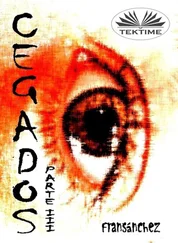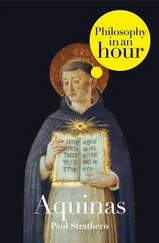Reply Obj. 3: As is related Gen. 17, Abraham received from God and at the same time both his name and the commandment of circumcision. For this reason it was customary among the Jews to name children on the very day of circumcision, as though before being circumcised they had not as yet perfect existence: just as now also children receive their names in Baptism. Wherefore on Prov. 4:3, "I was my father's son, tender, and as an only son in the sight of my mother," the gloss says: "Why does Solomon call himself an only son in the sight of his mother, when Scripture testifies that he had an elder brother of the same mother, unless it be that the latter died unnamed soon after birth?" Therefore it was that Christ received His name at the time of His circumcision. _______________________
THIRD ARTICLE [III, Q. 37, Art. 3]
Whether Christ Was Becomingly Presented in the Temple?
Objection 1: It would seem that Christ was unbecomingly presented in the Temple. For it is written (Ex. 13:2): "Sanctify unto Me every first-born that openeth the womb among the children of Israel." But Christ came forth from the closed womb of the Virgin; and thus He did not open His Mother's womb. Therefore Christ was not bound by this law to be presented in the Temple.
Obj. 2: Further, that which is always in one's presence cannot be presented to one. But Christ's humanity was always in God's presence in the highest degree, as being always united to Him in unity of person. Therefore there was no need for Him to be presented to the Lord.
Obj. 3: Further, Christ is the principal victim, to whom all the victims of the old Law are referred, as the figure to the reality. But a victim should not be offered up for a victim. Therefore it was not fitting that another victim should be offered up for Christ.
Obj. 4: Further, among the legal victims the principal was the lamb, which was a "continual sacrifice" [Vulg.: 'holocaust'], as is stated Num. 28:6: for which reason Christ is also called "the Lamb—Behold the Lamb of God" (John 1: 29). It was therefore more fitting that a lamb should be offered for Christ than "a pair of turtle doves or two young pigeons."
On the contrary is the authority of Scripture which relates this as having taken place (Luke 2:22).
I answer that, As stated above (A. 1), Christ wished to be "made under the Law, that He might redeem them who were under the Law" (Gal. 4:4, 5), and that the "justification of the Law might be" spiritually "fulfilled" in His members. Now, the Law contained a twofold precept touching the children born. One was a general precept which affected all—namely, that "when the days of the mother's purification were expired," a sacrifice was to be offered either "for a son or for a daughter," as laid down Lev. 12:6. And this sacrifice was for the expiation of the sin in which the child was conceived and born; and also for a certain consecration of the child, because it was then presented in the Temple for the first time. Wherefore one offering was made as a holocaust and another for sin.
The other was a special precept in the law concerning the first-born of "both man and beast": for the Lord claimed for Himself all the first-born in Israel, because, in order to deliver the Israelites, He "slew every first-born in the land of Egypt, both men and cattle" (Ex. 12:12, 13, 29), the first-born of Israel being saved; which law is set down Ex. 13. Here also was Christ foreshadowed, who is "the First-born amongst many brethren" (Rom. 8:29).
Therefore, since Christ was born of a woman and was her first-born, and since He wished to be "made under the Law," the Evangelist Luke shows that both these precepts were fulfilled in His regard. First, as to that which concerns the first-born, when he says (Luke 2:22, 23): "They carried Him to Jerusalem to present Him to the Lord: as it is written in the law of the Lord, 'Every male opening the womb shall be called holy to the Lord.'" Secondly, as to the general precept which concerned all, when he says (Luke 2:24): "And to offer a sacrifice according as it is written in the law of the Lord, a pair of turtle doves or two young pigeons."
Reply Obj. 1: As Gregory of Nyssa says (De Occursu Dom.): "It seems that this precept of the Law was fulfilled in God incarnate alone in a special manner exclusively proper to Him. For He alone, whose conception was ineffable, and whose birth was incomprehensible, opened the virginal womb which had been closed to sexual union, in such a way that after birth the seal of chastity remained inviolate." Consequently the words "opening the womb" imply that nothing hitherto had entered or gone forth therefrom. Again, for a special reason is it written "'a male,' because He contracted nothing of the woman's sin": and in a singular way "is He called 'holy,' because He felt no contagion of earthly corruption, whose birth was wondrously immaculate" (Ambrose, on Luke 2:23).
Reply Obj. 2: As the Son of God "became man, and was circumcised in the flesh, not for His own sake, but that He might make us to be God's through grace, and that we might be circumcised in the spirit; so, again, for our sake He was presented to the Lord, that we may learn to offer ourselves to God" [*Athanasius, on Luke 2:23]. And this was done after His circumcision, in order to show that "no one who is not circumcised from vice is worthy of Divine regard" [*Bede, on Luke 2:23].
Reply Obj. 3: For this very reason He wished the legal victims to be offered for Him who was the true Victim, in order that the figure might be united to and confirmed by the reality, against those who denied that in the Gospel Christ preached the God of the Law. "For we must not think," says Origen (Hom. xiv in Luc.) "that the good God subjected His Son to the enemy's law, which He Himself had not given."
Reply Obj. 4: The law of Lev. 12:6, 8 "commanded those who could, to offer, for a son or a daughter, a lamb and also a turtle dove or a pigeon: but those who were unable to offer a lamb were commanded to offer two turtle doves or two young pigeons" [*Bede, Hom. xv in Purif.]. "And so the Lord, who, 'being rich, became poor for our [Vulg.: 'your'] sakes, that through His poverty we [you] might be rich," as is written 2 Cor. 8:9, "wished the poor man's victim to be offered for Him" just as in His birth He was "wrapped in swaddling clothes and laid in a manger" [*Bede on Luke 1]. Nevertheless, these birds have a figurative sense. For the turtle dove, being a loquacious bird, represents the preaching and confession of faith; and because it is a chaste animal, it signifies chastity; and being a solitary animal, it signifies contemplation. The pigeon is a gentle and simple animal, and therefore signifies gentleness and simplicity. It is also a gregarious animal; wherefore it signifies the active life. Consequently this sacrifice signified the perfection of Christ and His members. Again, "both these animals, by the plaintiveness of their song, represented the mourning of the saints in this life: but the turtle dove, being solitary, signifies the tears of prayer; whereas the pigeon, being gregarious, signifies the public prayers of the Church" [*Bede, Hom. xv in Purif.]. Lastly, two of each of these animals are offered, to show that holiness should be not only in the soul, but also in the body. _______________________
FOURTH ARTICLE [III, Q. 37, Art. 4]
Whether It Was Fitting That the Mother of God Should Go to the Temple to Be Purified?
Objection 1: It would seem that it was unfitting for the Mother of God to go to the Temple to be purified. For purification presupposes uncleanness. But there was no uncleanness in the Blessed Virgin, as stated above (QQ. 27, 28). Therefore she should not have gone to the Temple to be purified.
Obj. 2: Further, it is written (Lev. 12:2-4): "If a woman, having received seed, shall bear a man-child, she shall be unclean seven days"; and consequently she is forbidden "to enter into the sanctuary until the days of her purification be fulfilled." But the Blessed Virgin brought forth a male child without receiving the seed of man. Therefore she had no need to come to the Temple to be purified.
Читать дальше












